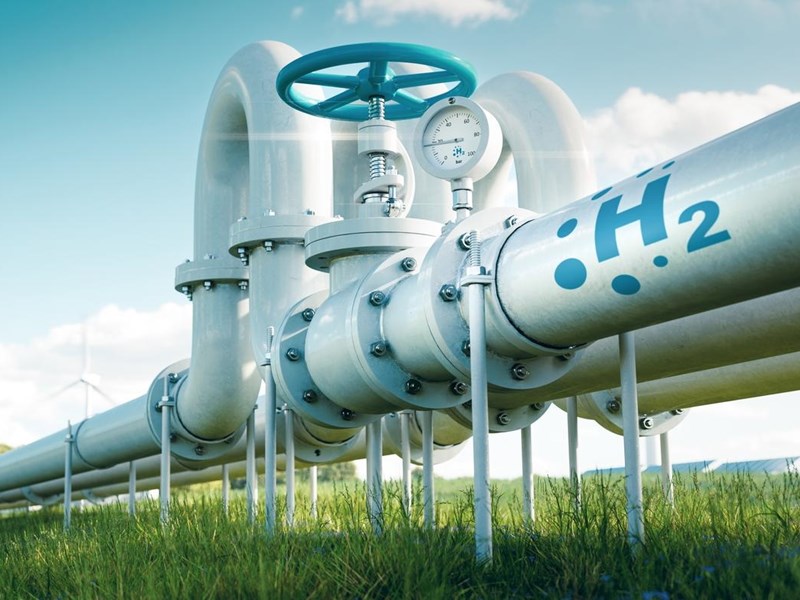Decoding hydrogen assets: financial viability and key economic factors
With hydrogen remaining in the spotlight as a key pillar in the energy transition, we look at how subsidies and price are critical to new hydrogen projects
3 minute read
Hector Arreola
Principal Analyst, Hydrogen & Emerging Technologies

Hector Arreola
Principal Analyst, Hydrogen & Emerging Technologies
Latest articles by Hector
-
Opinion
ADNOC doubles net hydrogen production through stake in ExxonMobil’s Baytown project
-
Opinion
Decoding hydrogen assets: financial viability and key economic factors
As the hydrogen market continues to grow, there are several key factors that determine the financial viability of hydrogen projects. If we look at the methodologies behind price formation there are several that could be applied to hydrogen projects: ‘technical analysis’ uses historical market data to establish trends and patterns, and the more holistic methodology of ‘fundamental analysis’ interrogates key market conditions.
However, as a consequence of the current maturity of the hydrogen market, the only truly viable options are the ‘marginal cost of supply’ methodology, which assesses production costs associated with hydrogen production methods, and ‘displacement cost / willingness to pay’, which examines costs associated with the potential replacement of a current energy system or technology with hydrogen.
Using data and research from Lens Hydrogen – our premium hydrogen research tool – we recently looked at the need for subsidies to enable hydrogen project feasibility and the impact on project economics from potential price pathways.
Fill in the form on the right to download your free copy of our full presentation on Decoding hydrogen assets, which we presented recently at this year’s Hydrogen Conference 2023. And read on for a summary of some of the presentation’s key points.
The continued evolution of price methodologies
Although these two approaches are the only feasible options today, as the hydrogen market continues to mature, price methodologies will inevitably evolve with it. We will see options becoming more varied and hydrogen business models more decentralised as emerging models leverage partnerships and agreement types become more diverse. We can predict that price formation will advance beyond the current ‘as a service’ bilateral dynamic to, in the short-term, project-specific pricing where price calculations are informed by supply source and end-use applications.
Finally, we will see the evolution reach a long-term price formation where the market has evolved and developed to the point where the molecule is commoditised.
Competitive market is the key differentiator to government incentives
With the interest in hydrogen projects remaining high, policies and government support are critical to justifying investment. Government incentives and their individual benefits vary, but the key differentiator between them is on the competitive market. Of the most common incentives, Production Tax Credit (PTC), Investment Tax Credit (ITC) and Contracts for Difference (CfD), it is CfD that is the competitive bid event. So it’s less important that the European Hydrogen Bank bid ceiling has been raised by the European Commission to €4.5/kg, in a competitive bid market, it’s low-cost projects that will win support and fail to benefit from the cap. This makes the US with its US$3/kg green hydrogen production tax credit as part of its Inflation Reduction Act (IRA) a more attractive option for the production market and to incentivise the investment required.
The link between subsidies and CI
The level of subsidies available are commonly linked to carbon intensity (CI), with project configuration a core component to enabling feasibility.
As current hydrogen production technologies are responsible for high carbon emissions, in addition to the green hydrogen production tax credit (section 45V) of the IRA, there is an also section 45Q which increases the value of the existing tax credit significantly for producing blue hydrogen through carbon sequestration.
The image above shows the comparison of well-to-gate emissions and the subsidies available under section 45V.
Price pathways for hydrogen
When we investigate potential hydrogen price pathways, there’s a clear impact on project economics. Subsidies are essential in order for producers to offer low prices – their projects demand that prices have to be more than US$5/kg – however, the knock-on effect is that these prices will increase cost for the end user.
Our full presentation shows in detail the after-tax Internal Rate of Return (IRR) under different subsidy scenarios, with the key takeaway from the analysis being that displacement cost could be as high as US$5/kg once carbon taxes are applied for sectors such as steel, and US$3/kg for the transportation sector.
Learn more
To learn more about the financial viability and key economic factors of hydrogen projects, fill out the form at the top of the page to download a free copy or our presentation on Decoding hydrogen assets, and unlock our charts that show in detail the levels of subsidies and the potential hydrogen price pathways.








